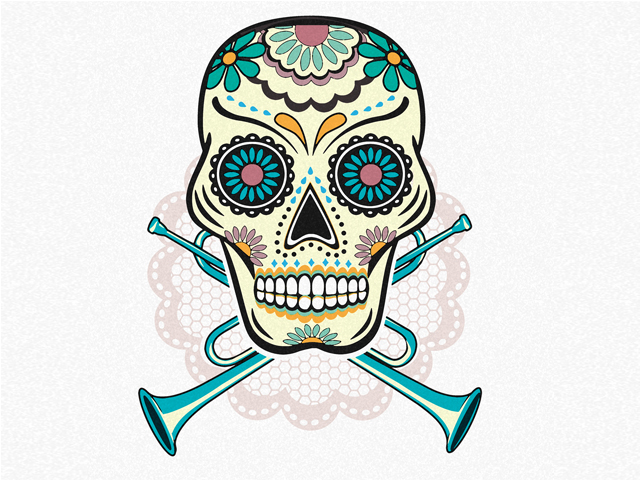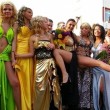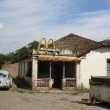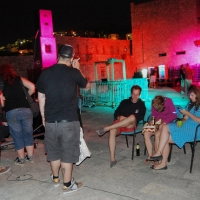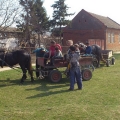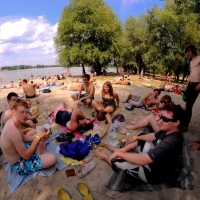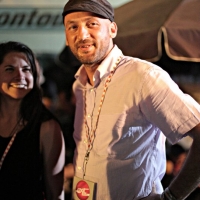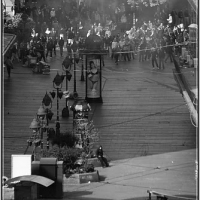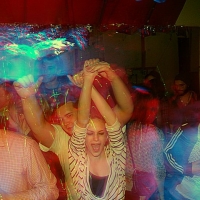Mariachi influences have always played a part in Balkan pop music, but over the last decade things have reversed. Mexico City is now embracing the brass-band folk of the Balkans
In February 2005, shortly after moving to Mexico City for the first time, I found myself surrounded by hundreds of sweaty, jumping Mexicans reveling in the sounds of Emir Kusturica and the No Smoking Orchestra. While I knew that Balkan music was fast becoming popular with the bespectacled youth of Western Europe and the United States in the early 2000s, it was nonetheless something of a surprise to witness its popularity in the land of cumbia and salsa (of the danceable and edible varieties).
Then again, it makes perfect sense. We are talking about two cultures with a marked fondness for accordions, brass instruments, men with prominent moustaches, and drunkenly teary late-night sing-alongs to melancholy tunes. Substitute some mezcal or tequila for the rakija, and it’s time for Mexi-Balkan style lumpovanje.
The Mexican-Balkan musical connection is not a new phenomenon. As one of Bturn articles recently documented, the Yugoslavian government in the 1950s took an active role in promoting Mexican music, resulting in some Slavic Mariachi tunes that were all the rage among our grandparent’s generation. And Latin music has long been popular in the Balkans where salsa clubs, conventions and classes abound, part of the global Latin dance and music scene. However, over the last decade, things have reversed. Some of Mexico City’s youth have embraced the brass-band and folk music of the Balkan Roma that was popularized – or, ahem, shamelessly appropriated – by Bregović, Kusturica, Balkan Beat Box, Shantel and the rest.
Balkan music’s recent popularity in Mexico, then, is part of the global rise of the “world music” scene, a musical trend that has seen elites around the world embracing and mixing traditional tunes from their own countries with others in an effort to make palatable precisely those musical forms that have long been excluded from the realm of high-brow musical legitimacy. While important debates have circulated among academics, music critics, and snarky, opinionated plebeians about questions of authenticity, appropriation, and exploitation with regards to “world music,” the fact remains that it has produced some fairly excellent musical concoctions and international collaborations. Case in point: Mexi-Balkan fusion music.
Sultán Balkanero, a founding member of La Internacional Sonora Balkanera, one of Mexico City’s preeminent Balkan bands, traces the rise of the newest Mexi-Balkan musical movement to the 2005 Kusturica and the No Smoking Orchestra concert, and the popularity of Kusturica’s films, especially Underground throughout Latin America. Since then, there has been a local proliferation of domestic Balkan-influenced bands, dance parties, and DJs. Even if, like Žižek, you loath Kusturica, or happen to think that Bregović is a washed out 1980s rocker who has plundered the artistic riches of the region’s Roma population for his own gain, you shouldn’t miss out on some of the pretty wonderful Balkan-inspired music coming out of one of the world’s biggest and liveliest metropolises (boycott those overpriced Bregović concerts instead).
Here’s a guide for next time you find yourself in Mexico City, with a hankering to hear a Mexican take on traditional Balkan beats.
Bands & DJs:
First and foremost, La Internacional Sonora Balkanera, founded in 2008, has been a bedrock of the Mexi-Balkan scene. They recently opened for Fanfare Ciocarlia on their visit to Mexico City, have hung out with Goran Bregović and co., and have performed at music festivals around the world. This is because they are really pretty much excellent musicians.
These DJs were some of those most responsible for spreading the Balkan beat scene in Mexico and have regularly updated events listings on their Facebook pages:
Other noteworthy bands include:
Where to go:
Most of the venues for Balkan dance parties are now to be found in the tree-lined boulevards of the trendy Roma and Condesa neighborhoods of Mexico City, while many of the earliest shows took place in the slightly grittier (but currently gentrifying) nearby Doctores neighbourhood. All of the following venues have periodic Balkan parties, and if you happen to go on an off-night, chances are that you will still find people who, like you, are into accordions, moustaches (possibly ironic), and the Music of Exotic Others.
*Tiana Bakić Hayden is a PhD candidate in Anthropology at New York University. She does research on street food and informal economies in Mexico, the Balkans, and beyond.

